#henry iv of england
Explore tagged Tumblr posts
Text
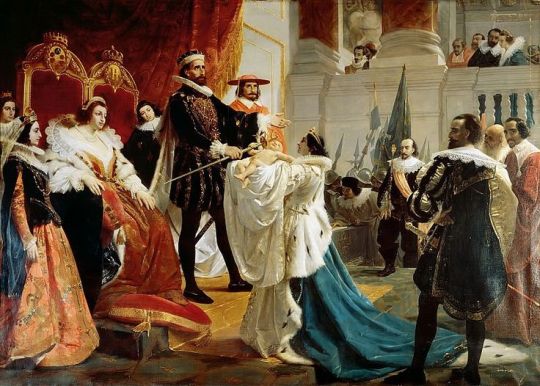
Henry IV Putting the Sword in the Hands of his Firstborn
Artist: Agostino Caironi (French, 1820-1907)
Henry IV of England
Henry IV (c. April 1367 – 20 March 1413), also known as Henry Bolingbroke, was King of England from 1399 to 1413. Henry was the son of John of Gaunt, Duke of Lancaster (a son of King Edward III), and Blanche of Lancaster.
Henry was involved in the 1388 revolt of Lords Appellant against Richard II, his first cousin, but he was not punished. However, he was exiled from court in 1398. After Henry's father died in 1399, Richard blocked Henry's inheritance of his father's lands. That year, Henry rallied a group of supporters, overthrew and imprisoned Richard II, and usurped the throne; these actions later contributed to dynastic disputes in the Wars of the Roses (1455–1487).
Henry was the first English ruler whose mother tongue was English (rather than French) since the Norman Conquest, over 300 years earlier. As king, he faced a number of rebellions, most seriously those of Owain Glyndŵr, the last Welshman to claim the title of Prince of Wales, and the English knight Henry Percy (Hotspur), who was killed in the Battle of Shrewsbury in 1403. Henry IV had six children from his first marriage to Mary de Bohun, while his second marriage to Joan of Navarre produced no surviving children. Henry and Mary's eldest son, Henry of Monmouth, assumed the reins of government in 1410 as the king's health worsened. Henry IV died in 1413, and his son succeeded him as Henry V.
#painting#british royal family#henry iv of england#narrative art#royal throne#interior#costume#men#women#queen#baby#sword#ceremony#british history#oil painting#fine art#agostino caironi#french painter#artwork#family#french art#european art
16 notes
·
View notes
Text
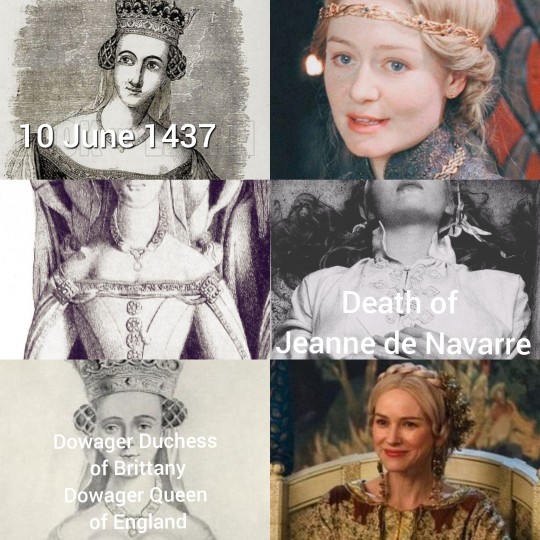
On this day in History, 10 June 1432, Jeanne d'Évreux, daughter of Navarre, died at Havering-atte-Bower. She was formerly Duchess of Brittany by her first marriage, and Queen of Enfland by her second marriage, which was a love union. Despite being imprisoned for some years by her stepson, Henry V, Joan (as she was better known by her English subjects) still received visits from her stepchildren such as Humphrey of Gloucester and John of Bedford, but more often her Beaufort in-laws like Cardinal Beaufort. She was buried next to Henry.
#house of lancaster#house of evreux#jeanne d'evreux#joan of navarre#henry iv of england#queen joan#dowager queen of england#dowager duchess of brittany#plantagenet dynasty
13 notes
·
View notes
Text
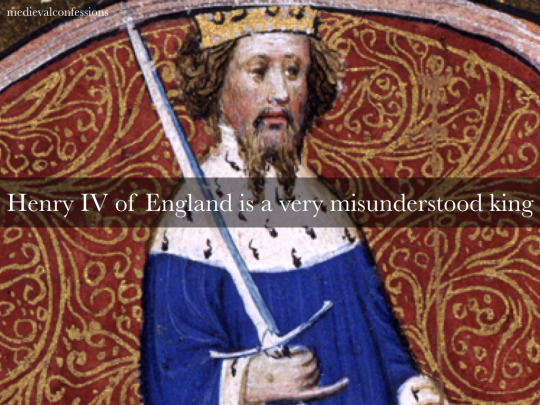
7 notes
·
View notes
Text
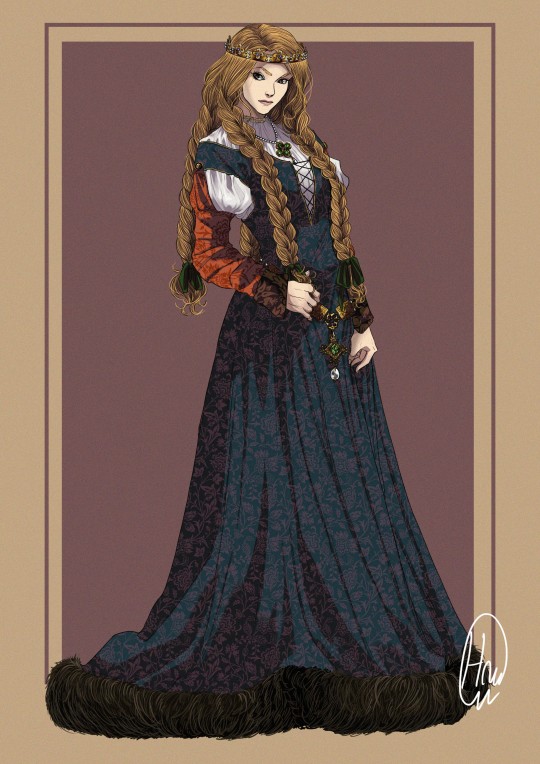
Elizabeth of York, fashion character design, c. 1479.
#the wars of the roses#15th century#medieval#middle ages#historical#british history#medieval england#art#illustration#sketch#edward iv#elizabeth woodville#elizabeth of york#henry vii#henry vi#margaret beaufort#richard iii#the white queen#the white princess#medieval fashion#character design#fanart#oc art#my art#artists on tumblr#medieval costume#house of york#plantagenets
361 notes
·
View notes
Text
Alright everyone here’s a very stupid question!
Also yes. I have personally read fanfiction about every single one of these figures listed in the poll.
#the wars of the roses#war of the roses#wars of the roses#tudors#the tudors#tudor england#historical polls#Polls#tumblr poll#tumblr polls#Henry V#humphrey duke of gloucester#richard duke of york#richard plantagenet#Edmund duke of Somerset#Edmund Beaufort#Henry VI#margaret of anjou#edward iv#George Plantagenet#george duke of clarence#richard iii#Henry viii#thomas cromwell#thomas more
125 notes
·
View notes
Text
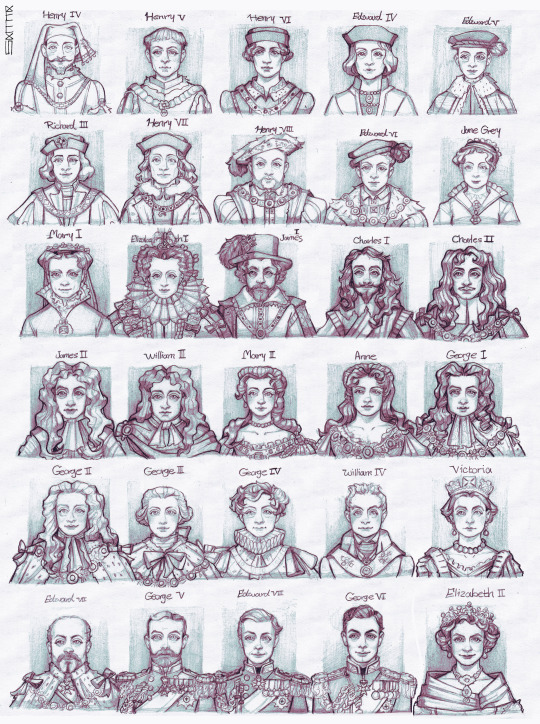
Something I had done years ago on A4 size paper. I think I skipped a few due to lack of space. Kings and Queens of England (after king Henry IV)
#kings of england#artists on tumblr#drawing#traditional art#traditional drawing#Richard III#Henry VII#Henry VIII#Mary I#Elizabeth I#Charles I#Charles II#George III#George IV#Queen Victoria#George v#George VI#Edward VII#queen elizabeth ii#history art
920 notes
·
View notes
Text
We just dropped the first song on our new musical's album and I'm SCREAMING!!!
And it has a TITLE!!
Meet "Brave Sons of England" an Epic New Musical based on Shakespeare's Henriad!
instagram
@socialshakespeare and all the Henriad readings during the pandemic heard me carrying on about it back when we were starting it and NOW ITS HERE! (I promised I'd tag you guys back in 2020....so here ya are!!)
#musical theatre#musicals#new musical#shakespeare#henry v#henry iv#richard ii#the Henriad#brave sons of England the musical#Instagram
60 notes
·
View notes
Text
Thinking about Elizabeth Woodville as a gothic heroine is making me go insane. She entered the story by overturning existing social structures, provoking both ire and fascination. She married into a dynasty doomed to eat itself alive. She was repeatedly associated with the supernatural, both in terms of love and death. Her life was shaped entirely by uncanny repetitions - two marriages, two widowhoods, two depositions, two flights to sanctuary, two ultimate reclamations - all paralleling and ricocheting off each other. Her plight after 1483 exposed the true rot at the heart of the monarchy - the trappings of royalty pulled away to reveal nothing, a never-ending cycle of betrayal and war, the price of power being the (literal) blood of children. She lived past the end of her family name, she lived past the end of her myth. She ended her life in a deeply anomalous position, half-in and half-out of royal society. She was both a haunting tragedy and the ultimate survivor who was finally free.
#elizabeth woodville#nobody was doing it like her#I wanted to add more things (eg: propaganda casting her as a transgressive figure and a threat to established orders; the way we'll never#truly Know her as she's been constantly rewritten across history) but ofc neither are unique to her or any other historical woman#my post#wars of the roses#don't reblog these tags but - the thing about Elizabeth is that she kept winning and losing at the same time#She rose higher and fell harder (in 1483-85) than anyone else in the late 15th century#From 1461 she was never ever at lasting peace - her widowhood and the crisis of 1469-71 and the actual terrible nightmare of 1483-85 and#Simnel's rebellion against her family and the fact that her birth family kept dying with her#and then she herself died right around the time yet another Pretender was stirring and threatening her children. That's...A Lot.#Imho Elizabeth was THE adaptor of the Wars of the Roses - she repeatedly found herself in highly anomalous and#unprecedented situations and just had to survive and adjust every single time#But that's just...never talked about when it comes to her#There are so many aspects of her life that are potentially fascinating yet completely unexplored in scholarship or media:#Her official appointment in royal councils; her position as the first Englishwoman post the Norman Conquest to be crowned queen#and what that actually MEANT for her; an actual examination of the propaganda against her; how she both foreshadowed and set a precedent#for Henry VIII's english queens; etc#There hasn't even been a proper reassessment of her role in 1483-85 TILL DATE despite it being one of the most wildly contested#periods in medieval England#lol I guess that's what drew me to Elizabeth in the first place - there's a fundamental lack of interest or acknowledgement in what was#actually happening with her and how it may have affected her. There's SO MUCH we can talk about but historians have repeatedly#stuck to the basics - and even then not well#I guess I have more things to write about on this blog then ((assuming I ever ever find the energy)#also to be clear while the Yorkists did 'eat themselves alive' they also Won - the crisis of 1483-85 was an internal conflict within#the dynasty that was not related to the events that ended in 1471 (which resulted in Edward IV's victory)#Henry Tudor was a figurehead for Edwardian Yorkists who specifically raised him as a claimant and were the ones who supported him#specifically as the husband of Elizabeth of York (swearing him as king only after he publicly swore to marry her)#Richard's defeat at Bosworth had *nothing* to do with 'York VS Lancaster' - it was the victory of one Yorkist faction against another#But yes the traditional line of succession was broken by Richard's betrayal and the male dynastic line was ultimately extinguished.
64 notes
·
View notes
Text
Some major takeaways: First, the coronation ceremony includes aspects that reflect the act of being invested a knight, the act of being married, and the act of being ordained a bishop. Second, and I think this is pretty cool, while the basic structure of the ceremony has been the same for at least a thousand years, we can trace the inclusion of specific elements included in or artifacts used for the ceremony, including:
the investing of knights by the monarch on the eve of their coronation, first started by Henry IV in 1399.
the use of anointing oil, including at one point miraculous oil purported to have been given to Saint Thomas Becket by the Virgin Mary, first used by Henry IV in 1399 and sporadically used since (though I found an article here that says the oil was used actually used in 1318, 1399, and at least once more in 1413)
the playing of Frederick Handel's Zadok the Priest, performed at each coronation since George II's in 1727.
the bestowing of a Sovereign's Orb, "representing the Christian monarch's domination over the secular world," with the orb currently in use being made for the coronation of Charles II in 1661.
the bestowing of a ring on the wedding finger, with the current ring (containing a relic of Saint George) being made for the coronation of William IV in 1831.
the bestowing of a scepter as a symbol of power and justice, the current one being made in 1685 for the coronation of James II in 1685.
the coronation itself, made with a crown. The two most important modern crowns are the Imperial State Crown, created for the coronation of Victoria in 1838 which includes a sapphire taken from a ring of King Saint Edward the Confessor (d. 1066). The other crown was created for Charles II in 1661, incorporating the remnants of a crown destroyed in 1649, a crown that had been made in 1216 for the coronation of Henry III but in turn likely incorporated parts of an earlier Anglo-Saxon crown.

King Charles III will be crowned today. Here's the historical background on the coronation ceremony, and what to expect!
#monarchy#ceremony#ritual#symbolism#England#Saint George#Thomas Becket#relic#Anglicanism#Catholicism#Marian Apparition#Charles II of England#Queen Victoria#George II of England#Henry III of England#Edward the Confessor#Henry IV of England#history#William IV of England#James II of England
27 notes
·
View notes
Text







One of my fav scenes in the Horrible Histories Prom >w<
#art#artists on tumblr#traditional art#george iv#fanart#king george iv#king george iv of england#georgeposting#king charles ii of england#charlesposting#charles ii#king george iii#george iii#horrible histories#horrible histories prom#henry viii#henry vii of england
22 notes
·
View notes
Photo








↳ richard iii of england + alphabet
#richard iii#aneurin barnard#the white queen#house york#house plantagenet#history#english history#twq#richard iii of england#anne neville#cecily of york#edward iv#george plantagenet#elizabeth woodville#richard of york#henry vii#margaret of york#john de la pole#historyedit#twqedits*#alphabet*#my gifs#creations*
411 notes
·
View notes
Text
“Whenever I am able to hear a good account of you, my heart rejoices exceedingly”
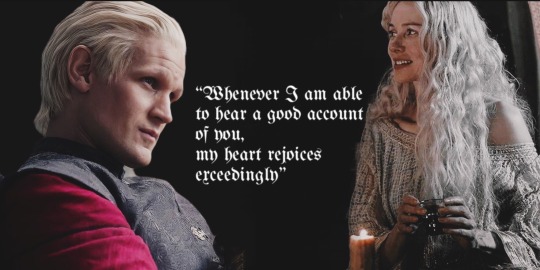
#house of lancaster#henry iv#plantagenet dynasty#henry iv of england#joan of navarre#king henry iv#king henry iv of england#queen joan#joanna of navarre#Matt Smith#Naomi Watts#Plantagenet edit#Lancaster edit#Henry IV x Joan Of Navarre
8 notes
·
View notes
Text
Forget the low picture quality but I think this is lowkey okayest


#a us history art assignment hate to see me comin#ermmm what the scallop#artists on tumblr#wip#silly drawing#art#king richard iii#richardposting#charlesposting#King Charles II of England#henry vii of england#Henry viii of England#henryposting#king John#king Ethelred#William iii#Mary II#Williamposting#George iv#king George iii#georgeposting
18 notes
·
View notes
Text

Elizabeth of York, fashion character design, c. 1481.
#the wars of the roses#15th century#historical#medieval#british history#medieval england#art#illustration#sketch#edward iv#elizabeth woodville#elizabeth of york#henry vii#henry vi#margaret of anjou#margaret beaufort#isabel neville#richard iii#the white queen#the white princess#medieval fashion#historical fashion#character design#artists on tumblr#medieval costume#royals#house of york#plantagenets
473 notes
·
View notes
Text


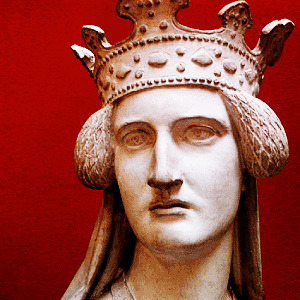
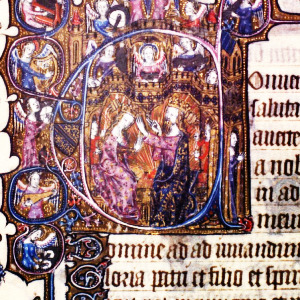


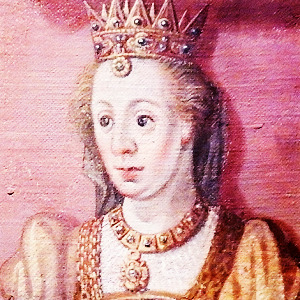
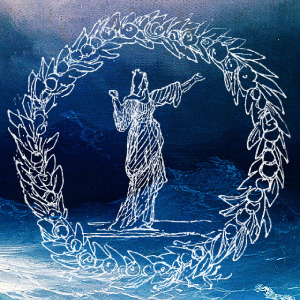
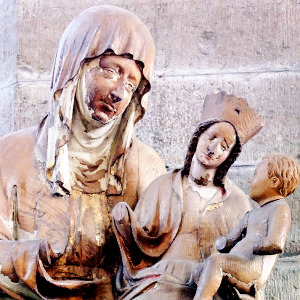
Philippa of England, Queen of Norway, Denmark and Sweden
Philippa of England was the youngest daughter and last child of Henry of Lancaster and Mary de Bohun, Earl and Countess of Derby, and was born on, or shortly before, 1 July 1394, when her mother died from complications in childbirth. Little is known of Philippa’s early childhood but when her father usurped the throne in 1399, becoming Henry IV, her future changed dramatically. No longer the youngest daughter of an earl, she was now a princess.
The new king almost immediately began searching for marriage alliances for his two daughters. 1401 saw Henry enter into marriage negotiations with Margrete of Denmark for Philippa to marry Margrete’s adoptive son and heir, Erik of Pomerania. Like Henry, Margrete was hoping for an alliance to strengthen her domestic position and that of the fledgling Kalmar Union of Norway, Denmark and Sweden. It wasn’t until 1405 that the marriage was formally agreed upon and in December, Philippa was proclaimed Queen of Norway, Denmark and Sweden. In August 1406, the 12-year-old Philippa sailed from England in August 1406. She married Erik at the cathedral of Lund, and her coronation soon followed. Famously, Philippa is the first documented European princess to wear white at her wedding.
She spent the next three years at Kalmar Castle in Sweden, the first year under the guidance of Katarina Knutsdotter (the granddaughter of Saint Birgitta of Sweden), and probably owing in no small part to her youth, Philippa remained in the sidelines of rule until Margrete’s death in 1412. She retained close ties to Sweden, serving as Erik’s de facto regent there, and was the only queen of the Kalmar Union to ever achieve popularity in Sweden. Of particular note is her patronage of Vadstenna Abbey, the motherhouse of the Bridgettine Order. She often stayed there when in Sweden, was a generous patron, and petitioned the pope multiple times on the Order's behalf, even enlisting the support of her brother, Henry V of England. In 1425, Philippa donated a choir dedicated to St. Anne, where she was later buried. This may have had particular significance for Philippa, as she had no surviving children..
Philippa was deeply involved in the rule of all three kingdoms of the Kalmar Union. In 1420, demonstrating Erik’s trust in her, it was decided that she would serve as regent to his heir, Bogislaw of Pomerania, should the marriage remain childless, and her widow’s pension would effectively give her a ‘queendom’ in Sweden. In 1423, Erik went on pilgrimage and Philippa served as his regent, with all power that entailed, until his return in 1425. She also obtained the resources and support Erik needed for his war against the Hanseatic League. Indeed, it was Philippa who organised the defence of Copenhagen against the bombardment of the Hanseatic League in 1428 to great acclaim.
In late 1429, Philippa, apparently in good health, travelled to Sweden to secure further support for the war against the Hanseatic League. She was staying in Vadstena Abbey when she fell seriously ill and died on the night of 5 and 6 January 1430, possibly following a stillbirth. Philippa was remembered almost universally favourably, a reputation that was surely deserved.
Sources: Paris, Bibliothèque Nationale, MS Lat. 17294), "Filippa, drottning", Svenskt kvinnobiografiskt lexikon (article by Charlotte Cederbom), Steinar Imsen, “Late Medieval Scandinavian Queenship”. Queens and Queenship in Medieval Europe, Mary Anne Everett Green, Lives of the princesses of England from the Norman conquest, Vol 3.
#philippa of england#edits#otd#historyedit#henry iv#henry v#medieval scandinavia#kalmar union#on this day
97 notes
·
View notes
Text
We are back for another historical hypothetical folks!
And this time it is:
Think of it as a Midsomer Murders/Clue style thing.
I don’t have an answer for who the victim is. You can choose anyone you want, for the victim.
#historical hypotheticals#historical hypothetical#Polls#tumblr poll#Tumblr polls#historical polls#war of the roses#the war of the roses#wars of the roses#tudors#the Tudors#Tudor England#Henry v#humphrey duke of gloucester#john duke of bedford#richard duke of york#richard plantagenet#edmund duke of somerset#edmund beaufort#richard neville#Richard Earl of Warwick#margaret of anjou#Henry Vi#edward iv#richard iii#henry viii#thomas more#thomas cromwell
121 notes
·
View notes